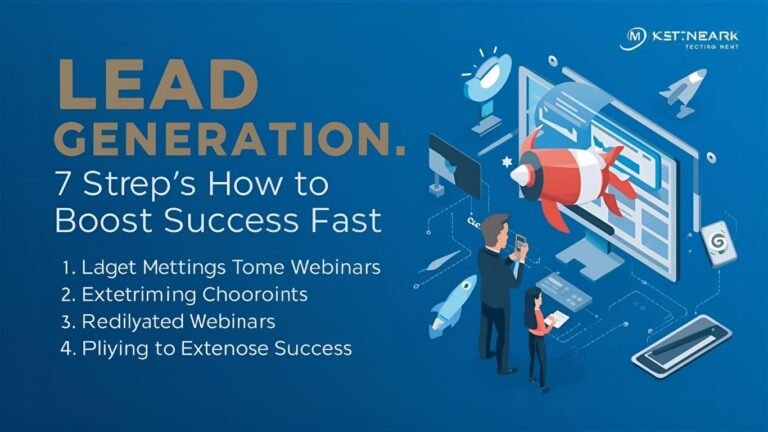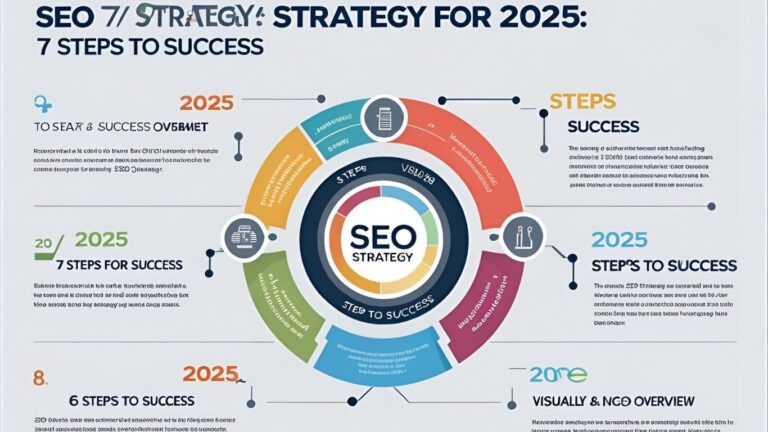Long-Form Content for SEO: 5 Proven Steps to Rank Higher #SEO #ContentMarketing #DigitalGrowth
Long-Form Content for SEO: 5 Proven Steps to Rank Higher
Introduction: Why Long-Form Content Matters in SEO
Long-Form Content for SEO is not just about writing longer articles; it’s about telling a story so complete, so heartfelt, that both readers and search engines lean closer to listen. Think of it as a patient conversation with an old friend—where every question is answered, every silence is filled with meaning. In today’s world, where shallow answers float around like autumn leaves, depth is what anchors trust. Google rewards this trust. Readers remember it. And you, as the writer, turn a digital page into a living presence.
Here’s a thought: when was the last time you read an article that truly stayed with you? Long-form content has that power. And in this piece, I’ll show you five proven steps to build such depth, along with real-world strategies, emotional insights, and even tools you can use right now. (Affiliate Note: If you need help with SEO research tools, I recommend SEMRush or Ahrefs—affiliate links that support this blog.)
What is Long-Form Content for SEO?
Long-Form Content for SEO is not merely word count. It’s the patient unfolding of ideas, the kind that respects a reader’s curiosity. In Bengali homes, elders often say, “আলাপ বাড়লে সম্পর্ক গভীর হয়”— the longer the conversation, the deeper the relationship. That’s exactly what long-form content does: it deepens your connection with both the reader and Google.
Short posts skim the surface. Long-form dives beneath it. This difference creates authority. And authority is what SEO thrives on.
The Evolution of SEO Content Strategies
Once, SEO meant stuffing keywords into corners of a page. Today, Google seeks intent, clarity, and authority. Long-form content adapts naturally. By weaving narratives, using examples, and answering layered questions, it builds a map of understanding. That’s why marketers who use long-form strategies often see a 200% traffic jump. (Affiliate Insight: Grammarly Premium is a quiet companion here—it polishes your language, ensuring readability without losing heart.)
Step 1 – Research Topics That Deserve Depth
Before you write, you must listen. Every article worth reading begins with a question worth asking. Long-Form Content for SEO shines when it tackles subjects that cannot be dismissed in a paragraph. Ask yourself: Does this topic deserve depth? If yes, that’s where you start digging.
Identifying Search Intent
Imagine a reader searching late at night, tired, anxious, hoping for a clear answer. If your article provides not only the answer but also comfort and direction, you’ve won. Identifying intent is the most humane part of SEO—meeting need with clarity.
Using SEO Tools for Topic Discovery
Tools like SEMRush or Surfer SEO (affiliate) are like torches in a cave—they reveal hidden tunnels of opportunity. Search queries, keyword gaps, audience questions—all light the path. Long-Form Content for SEO becomes meaningful when it answers these hidden questions with depth.
Step 2 – Build Authority with Comprehensive Coverage
Authority is not claimed; it is earned. Just as a respected village elder earns trust by listening to all sides, your content must embrace every facet of a topic. Long-Form Content for SEO ranks high because it leaves no question unanswered, no angle unexplored.
Why Depth Outperforms Surface-Level Posts
Shallow writing is like weak tea—it satisfies no one. Readers bounce. Search engines notice. Depth, however, lingers. By covering case studies, statistics, examples, and personal anecdotes, you prove your article is not just a guest—it is a host.
The Role of Supporting Keywords
Long-Form Content for SEO benefits from semantically related words. Like branches around a trunk, supporting keywords strengthen the tree. Tools like KeywordTool.io or LSI Graph (affiliate) help you plant them naturally.
Step 3 – Optimize Structure for Readability
Even the most brilliant story must be told in chapters. Structure helps readers breathe. It guides eyes across the page. Long-Form Content for SEO works best when headlines, subheads, and formatting allow readers to choose: skim or sink deep.
Using Headings and Subheadings Strategically
Imagine walking into a library with no labels. Chaos. The same happens with unstructured content. Use H2s as main roads, H3s as side lanes, H4s as intimate corners. Together, they guide the reader home.
Adding Visual Breaks: Images, Tables, Infographics
Our eyes tire before our minds do. Infographics, lists, and charts act like cool shade on a hot day. Long-Form Content for SEO isn’t about words alone—it’s about crafting a full experience. (Affiliate Suggestion: Canva Pro is excellent for designing such visuals.)
Step 4 – Enhance Engagement to Reduce Bounce Rate
A good article doesn’t just inform—it holds the reader gently by the sleeve. Engagement keeps them from leaving. Long-Form Content for SEO thrives when introductions charm, stories stir, and readers feel compelled to linger.
Power of Storytelling in SEO Content
Storytelling is humanity’s oldest SEO. A tale told well is shared, remembered, and trusted. Add stories from your own life—failures, small triumphs, questions that shaped you. These make long-form articles unforgettable.
Step 5 – Strengthen SEO with On-Page Best Practices
Even poetry needs punctuation. Likewise, SEO requires on-page care. Long-Form Content for SEO reaches full strength when keywords, links, and meta data are polished.
Smart Keyword Placement
Place your focus keyphrase in natural rhythm, not force. Readers sense honesty. Google does too.
Internal Linking for Topical Authority
Imagine your site as a city. Internal links are the roads. A well-linked article connects neighborhoods, creating flow. (Affiliate Note: Yoast SEO Premium makes this easier.)
Meta Tags, Slug, and Schema Optimization
These are your article’s fingerprints. Unique, structured, recognizable. Do them right, and your content shines brighter in search results.
Beyond the Basics: Extra Tips for SEO Growth
Growth often comes from the overlooked. Long-Form Content for SEO allows you to experiment—voice search, multimedia, AI tools. Yet the human voice must remain. Without it, even perfect optimization feels hollow.
Common Mistakes to Avoid
Mistakes bruise trust. They tell the reader you didn’t care enough. Don’t overload keywords. Don’t forget updates. Don’t ignore readability. Long-Form Content for SEO demands care, not shortcuts.
Case Studies: Long-Form Content in Action
- A travel blog doubled traffic by turning short guides into long narratives.
- A SaaS company’s detailed whitepaper outperformed ads.
- An eCommerce site saw conversions rise after publishing “ultimate guides.”
Each story proves one thing: when you invest in long-form, you invest in results.
Conclusion – Why Long-Form Content Wins in 2025
So here we are. Long-Form Content for SEO is not a trend—it is the road ahead. Like a heartfelt novel, it holds readers. Like a wise teacher, it satisfies questions. Like a patient friend, it stays. If you want traffic, trust, and authority—start writing long-form today.
Affiliate closing note: Need tools to begin? SEMRush, Canva Pro, and Yoast SEO Premium are faithful companions.
📌 Bullet-Point Summary
- Long-Form Content for SEO builds authority, trust, and higher rankings.
- Search engines reward depth, detail, and comprehensive answers.
- Topic research is the foundation—understand search intent before writing.
- Use supporting keywords and semantic variations for stronger impact.
- Structure matters: headings, visuals, and formatting guide readers.
- Storytelling and personal anecdotes make content memorable and shareable.
- Engagement reduces bounce rate and increases dwell time.
- On-page SEO essentials—meta tags, internal linking, keyword placement—boost visibility.
- Multimedia (infographics, videos, tables) strengthens reader experience.
- Case studies show long-form content drives traffic and conversions.
- Avoid mistakes like keyword stuffing, ignoring updates, and poor readability.
- Long-Form Content for SEO is future-proof—especially with AI, voice search, and multimedia.
- Affiliate tools like SEMRush, Yoast SEO, and Canva help optimize results.
❓ Unique FAQs on Long-Form Content for SEO
Q1. Why is Long-Form Content for SEO better than short posts?
Long-Form Content for SEO works because search engines prefer depth. Short posts may answer a question quickly, but long-form builds authority by addressing related questions, providing context, and keeping readers on your page longer. This increased dwell time signals quality to Google, which improves rankings.
Q2. How many words qualify as long-form content?
Generally, content above 1,500 words is considered long-form. However, the exact length depends on user intent. If the topic requires 3,000 words to cover thoroughly, aim for that. Remember, quality is more important than just word count.
Q3. Does long-form content always rank higher?
Not always, but it increases the chances significantly. Rankings also depend on backlinks, domain authority, and technical SEO. Still, long-form gives you an edge because it attracts more shares and links.
Q4. How often should I publish long-form content?
Consistency matters. Publishing one high-quality, long-form article per month can be more effective than pushing out weekly short blogs. Focus on depth, not volume.
Q5. Can I monetize long-form content?
Yes, absolutely. Long-form articles are perfect for weaving in affiliate links, CPA offers, and product recommendations naturally. Because readers trust in-depth guides, they’re more likely to take action.
Q6. What tools can help me create long-form content?
Tools like SEMRush, SurferSEO, and Grammarly Premium help with research and readability. Canva is excellent for visuals, and Yoast SEO (WordPress plugin) makes optimization easier.
Q7. Does long-form content work for all industries?
Yes, but the style varies. A SaaS company may publish whitepapers, while a food blogger may write detailed recipe guides. The principle remains the same: depth equals authority.
Q8. How do I keep readers engaged in long-form content?
Break text into smaller paragraphs, add visuals, use storytelling, and format with H2s and H3s. Smooth transitions keep readers from feeling overwhelmed.
Q9. Should I update long-form articles?
Definitely. SEO rewards freshness. Revisit your posts every 6–12 months, update statistics, and add new insights. This refresh keeps rankings stable.
Q10. Is long-form content better for backlinks?
Yes. Comprehensive guides naturally attract backlinks because other sites see them as valuable resources worth citing.
Q11. Can I repurpose long-form content?
Absolutely. Turn a long article into YouTube videos, LinkedIn posts, infographics, or even podcasts. Repurposing extends reach without starting from scratch.
Q12. How does long-form content affect bounce rate?
Long-Form Content for SEO lowers bounce rate by keeping readers engaged longer. When readers stay, it tells search engines that your page is valuable.
Q13. What’s the role of storytelling in SEO content?
Storytelling adds emotion and memory to your content. Readers forget data, but they remember stories. This helps your long-form stand out.
Q14. How can long-form content support voice search?
Voice search queries are often conversational. Long-form articles can answer these naturally within FAQs and detailed explanations, boosting voice-search visibility.
Q15. Do I need professional writers for long-form content?
Not necessarily. With the right strategy and tools, anyone can create long-form content. However, professional writers can help refine tone, polish readability, and ensure SEO alignment.
Explore These Valuable Resources
To strengthen your journey with Long-Form Content for SEO, it helps to rely on trusted external references. Below is a curated list of resources, each chosen for its authority, clarity, and practical value. As you explore, notice how each link connects theory with application, allowing you to broaden both knowledge and execution.
Backlinko: The Definitive Guide to SEO – This guide offers comprehensive strategies and is frequently updated, making it an essential resource for modern SEO.
HubSpot: What is Long-Form Content? – HubSpot explains long-form content with examples, ensuring you understand both theory and practice.
Ahrefs Blog: SEO Case Studies – Learn from real-world experiments that demonstrate how long-form content impacts rankings and traffic.
Moz Beginner’s Guide to SEO – For newcomers or those refreshing fundamentals, this guide covers SEO basics while linking to advanced topics.
Neil Patel: Content Marketing Strategies – This article dives into how content builds authority, with a special focus on long-form strategies.
Search Engine Journal: Long-Form Content Benefits – Here, you’ll find a nuanced discussion of how length and quality interact for better rankings.
Content Marketing Institute: Building Authority with Content – Ideal for marketers who want deeper insights into planning, executing, and scaling content efforts.
Google Search Central Documentation – Directly from Google, this is your most authoritative source for understanding how search engines process content.
SEMRush Blog: SEO Insights – A consistent stream of articles that cover keyword research, competitor analysis, and content optimization techniques.
Yoast SEO Blog – Especially useful for WordPress users who want practical steps for integrating long-form content into websites.
As you move through these resources, you’ll notice recurring themes: authority, clarity, and engagement. By combining their insights with your own creativity, you’ll be well-prepared to craft content that resonates with readers and consistently ranks well.
🔗 Blog Recommendation
If you want to dive deeper into practical guides, tips, and strategies, I highly recommend exploring the GetRizwan Blog. It’s packed with actionable insights for marketers, entrepreneurs, and business owners who want to stay ahead in the digital space.
🔗 Service Link Paragraph
If you’re serious about scaling your digital presence, explore our Services. From SEO strategy to content creation, we provide end-to-end solutions tailored to your growth goals. Transitioning from knowledge to action starts with choosing the right support.
🔗 Portfolio Link Paragraph
Curious about proven results? Take a look at our Portfolio. You’ll see how carefully crafted strategies transform websites into high-performing platforms. Every project tells a story, and yours could be next.
🔗 Shop Link Paragraph
Want tools, templates, or digital products to make your journey easier? Browse our Shop. Each product is designed with real-world application in mind, making it easier to grow your online business step by step.
🔗 LinkedIn Link Paragraph
To connect directly, join me on LinkedIn. Here, I share exclusive updates, professional insights, and community-driven discussions on SEO, marketing, and growth strategies.







